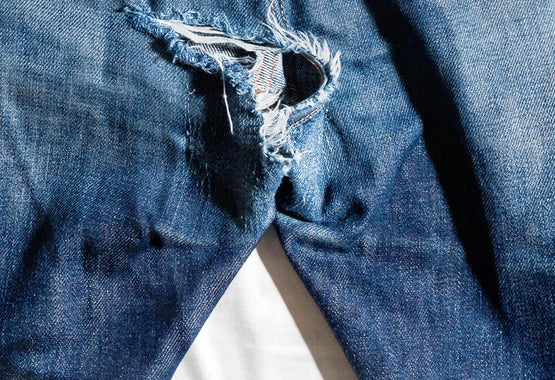How To Find The Bins, Rag Houses and Secret Thrifts In Your City


It’s a question that never fails to come up on ThriftCon's social media comment threads when we’re out making content at some of our favorite spots: “Where do y’all find these places?”
Honestly, the Internet has changed all aspects of life in just a few short decades and vintage or secondhand clothing has never been immune. To answer to a lot of these questions it’s as easy as reaching into your pocket. But to give a little more personal insight in the matter, we asked one of ThriftCon’s long-time vendors how to navigate each of the three biggest spots to source at.
Bins. Rag houses. Thrifts.
Yet because of the way people are, they’ve asked us not to use their real name. For the purpose of this piece we’re going to call them Clark Kent — someone who’s been reselling for a long-ass time. The bins are pretty much their favorite place to be and that’s because there is just an insane amount of stuff to go around, even when it’s crazy busy.
“The bins don’t exactly exist in every city,” says Kent. “As far as I understand it, Goodwill is the only shop who even does the bins thing and they’re not clearing things out everywhere. Your best bet is to just Google ‘clothing by the pound near me’ and see where it takes you. I’ve seen some smaller mom and pops have bin-type setups but it’s basically just huge cardboard boxes instead of rolling bins. By the pound are those key words search engines like though.”
Kent’s right. Goodwill does not have a famed Outlet Store in every state, but it does have quite a few — over 120 locations across the U.S. in fact. There are even independently ran online resources, like GoodwillOutlets.com, that hunt them down and keep updated lists of current locations for you.
“It’s the easiest place to get inventory if you have a bunch of free time,” he adds. “It’s like a tenth of the cost of a regular thrift store and always pretty chill. It can get kinda crazy when it’s busy though.”
Rag houses on the other hand are a different animal entirely. Had this been 10 years ago the story would read different, but right now the fact is: you likely won’t ever be able to step foot into one of them now. Because the popularity of vintage has grown so much these past few years, places like these have become protected assets.
The reason why is pretty simple. Rag houses often have an insane amount of inventory that’s been bailed up and sitting around for decades. Like textile gold. And because most of them operate by the tons and not the piece, having a few hundred resellers digging around for hours making pennies isn’t exactly what they’re after.
“Yah the only way you can really get into those places is if you have homies or a lot of cash,” explains Kent. “You can find them pretty easy on Google too, but good luck trying to get them to call you back.”
As Kent explains it, most Rag houses are only willing to work with you if you pay up front — somewhere in the several thousands of dollars to start. That means when you go in you’re taking several hundred pounds out at a time, too. But to do so requires a lot of skilled labor rummaging through the piles. If you’re able to link up with someone who already has an account and offer your services, it may be one way to get your foot in the door. If not, chances for now remain slim.
A recent Bidstitch article explains the dangers of trying to push your way into a spot you’re not welcome in either.
“Rag houses tend to be a dog eat dog environment,” it reads. “We’ve even been told stories of people getting held at gunpoint for trying to enter someone else’s rag house.”
It isn’t like the inventory plucked from there is out of reach entirely, however. Many pickers who do have access to these places aren’t able to sell it all themselves and will often give great bundle deals to people they like. You’ll be paying a premium, but will have access to some of the crazier things Americans have thrown away over the past forty years.
If you’re just starting out, it’s best to start with the public areas that are easy to find and navigate — your local thrift stores around town. They still have great things to pick though and if you’re able to work up relationships with those behind the counter you can always ask about smaller, not as well known stores in the state. The industry tends to act like a small town and sometimes the hidden gems are ones that aren’t as visible to the digitally inclined masses.
Regardless of where you end up, it’s always a numbers game on how well you’ll do finding great things to buy at a steal. Always keep yourself open to explore and never take it too seriously. It’s just stuff, after all.













